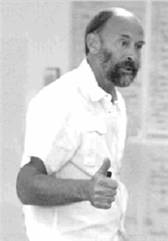| Bill Cope’s |
| Solution Sessions |
| Breakthrough solutions to burning problems & opportunities |


Bill & Cavas Reveal Some of
Their Keys to Great Sessions
Quotes from Bill Cope
 |
|
|
|
|
Bill’s personality and presence give permission for the participants to become comfortable and playful, thus optimizing idea generation without the contamination of drama. Charles D. Elias, PhD, LCSW |
|
|
These techniques are all just a way of fooling the censor in your head. George M. Prince, Author |
No problem is impossible or too big if the right people go at it the right way.
Great breakthroughs start as half baked ideas.
If you want to feel brilliant, indeed be brilliant, you have to start with absurd ideas.
We’ll start way, way outside the box and land with a practical breakthrough.
I love working with a group of very bright people for three days to solve a problem that someone said was unsolvable!
We’ll allow the energy of laughter and the absurd to be harnessed.
Everything I do is geared to increase the probability of success and market dominance for my clients—everything!
It’s about playful, relaxed intensity—followed by exhilarating exhaustion.
I stay barely on the acceptable side of outrageous—to open groups up for creative breakthroughs.
Good big ideas aren’t built incrementally out of good little ideas. They start as big bad ideas, then get refined.
Ideas are like the first sketch for a new design. You never plan to really build that, yet you don’t throw it in the wastebasket. Instead, you take a sheet of tracing paper and bring forward the parts you want to keep while changing the other parts with which you weren’t satisfied.
Ideas are like raw materials. The last thing you would do is put them in the company dumpster! They take a lot of processing and refining. You remove unwanted impurities, blend in other additives, and finally you end up with a finished product that Marketing says, ‘Wow, we can sell that!”
What writing, design, production, and invention all have in common is that they are not linear processes. They are iterative. Which means it matters less where you start than that you start somewhere, because then you can start iterating and refining.
Please stop throwing your ideas away—they are your solution’s raw material.
Ordinary ideas are as common as air. In contrast, big bad ideas are precious rarities. They can lead to breakthrough practical solutions worth a fortune.
Your ideas are not the endpoint. They’re the crucial raw material from which together we’ll develop your breakthrough solutions.
“Practical” ideas seem closest to solutions and likely your competitors patented them 20 years ago. Instead, we’ll find your solutions through impractical ideas, the ones your competition is afraid to tackle.
I take some time during sessions to ask participants for absurd ideas, and only allow those that must be illegal, immoral, fattening, violating some physical laws, invoking the use of black magic, etc. What is absurd for one person triggers a realistic build from another.
Your people stuck in an unsolved burning problem feel helpless, and later—having solved it—they feel powerful.
Tough times are when you can least afford to not have solutions to burning problems.
I don’t want consensus to start a session. I want to exploit the diversity in the group so I tell them at the beginning “let us agree to disagree.”
The more alternative starting points we have, the more different directions we have to go looking for a solution.
Give us three days together and we’ll get your breakthroughs.
My goal is to be a catalyst for the most exciting, creative, and high yield sessions of your participants’ careers.
Quotes from Cavas Gobhai
|
|
Most great ideas are “born bad.” You’re more likely to get to great solutions from the seemingly crazy or outrageous than from the cautious and sensible.
There is an optimal application of creativity. Non-targeted use of creativity can be counter-productive to “helping ideas happen.”
Consensus should emerge through creativity, not compromise.
Erstwhile adversaries need not solve their seeming conflict through give and take. The solution can give each more than they initially wanted.
Also Revealing
Who are the two best solution facilitators in the world?
|
Copyright © 2008 Bill Cope. All rights
reserved. |
|||||
